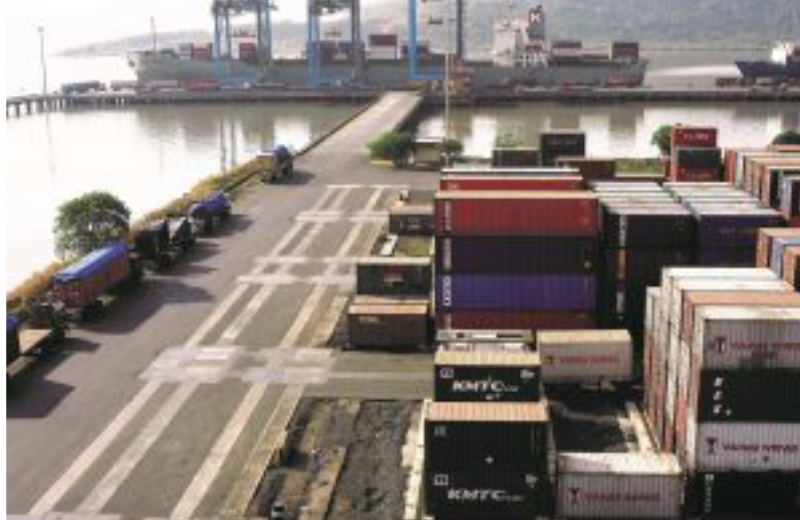While different interventions have positively developed the port ecosystem, there are still gaps that need to be bridged India’s exports in April 2020 contracted by 60% year-on-year. There was a 37% fall in the twenty-foot equivalent units handled by the Jawaharlal Nehru Port in April 2020 as compared to April 2019. The steep decline in world trade lays bare the significance of a more digitised trading environment, with minimal manual touch points.
With the pandemic, the slump in international trade is unpredictable. As countries slowly emerge out of this, new demand and supply chains will form, that will be located in countries that re-orient their existing trade structures.
Upgradation, digitisation, automation
Globally, digitisation of procedures and lower human intervention are the two major pillars that drive trade across borders. Post India’s ratification of the Trade Facilitation Agreement of the World Trade Organization in April 2016, reforms focused on infrastructural upgradation, digitisation and automation. Schemes such as Direct Port Entry and Direct Port Delivery, and the Radio Frequency Identification system and Single Window Interface for Facilitating Trade, were all aimed at reducing the time and cost of clearance of goods. The Port Community System was aimed at seamlessly integrating all maritime trade-related stakeholders on a single platform. And e-SANCHIT (e-Storage and computerised handling of indirect tax documents) was aimed at reducing human intervention.
These and other interventions speak of the government’s focus on effective logistics and smooth export-import (EXIM) procedures at Indian borders. This resulted in continuous improvement in India’s Ease of Doing Business ranking, particularly in the ‘trading across borders’ parameter on which it ranked 68 in 2020. With the current crisis, ports across India demand a greater leap in trade facilitation measures to expedite the movement, release and clearance of goods.
While different interventions of the government have positively developed the port ecosystem, there are still some gaps that need to be bridged. These are particularly with respect to the standardisation and coordination of processes across ports, and awareness and acceptability of new initiatives among the users which depends on the adaptability and ease of linkage between multiple systems.
Gaps to be filled
Some of the delay in moving to a paperless trade ecosystem can be attributed to gaps in the effective implementation of digital platforms. First, shortcomings in the functionality of the system and technical glitches result in limited use of the system or parallel use of hard copy. For example, the absence of a shipping line delivery order in customs and terminal systems results in usage of hard copy for cargo movement. Second, lack of connectivity/message exchanges between different stakeholders’ systems results in delayed cargo clearance. Third, there are many issues with respect to training and capacity building amongst the users, restricting the optimal utilisation of digital platforms.
Like in the rest of the world, in India too the operations of multiple stakeholders in the logistics and trade ecosystem including customs brokers, shipping lines, freight forwarders, transport operators, port custodians, container freight stations and border management authorities have been restricted. This indicates the need to further augment the digital infrastructure in the trade ecosystem. With trade volumes contracting and economic indicators shrinking, the present crisis presents an opportunity to develop new systems and enhance existing platforms while at the same time changing the attitude of stakeholders on the ground.
In the last two months, different guidelines have been issued by the government, focusing on measures to facilitate and expedite the clearance process so that it is more automated, online and paperless. While some immediate steps are needed to survive the crisis, it is imperative to work on a permanent road map which addresses some of the gaps highlighted. Enhanced integration of systems and coordination between them should ideally result in exchange of messages and sharing of input data between them on a real-time basis. Promoting use of a multi-stakeholder single platform like the Port Community System can streamline EXIM procedures, moving towards a digitally engaged and enhanced trading environment.
These efforts will be instrumental towards improving India’s trading ecosystem and achieving the desired target of Ease of Doing Business (ranking under 50) set by the Prime Minister’s Office. The more digitised our trade facilitation infrastructure, the more immune we will be to future disruptions.
Authors: Afaq Hussain is Director and Nikita Singla is Associate Director at Bureau of Research on Industry and Economic Fundamentals, Delhi. Views are personal
Source: The Hindu






